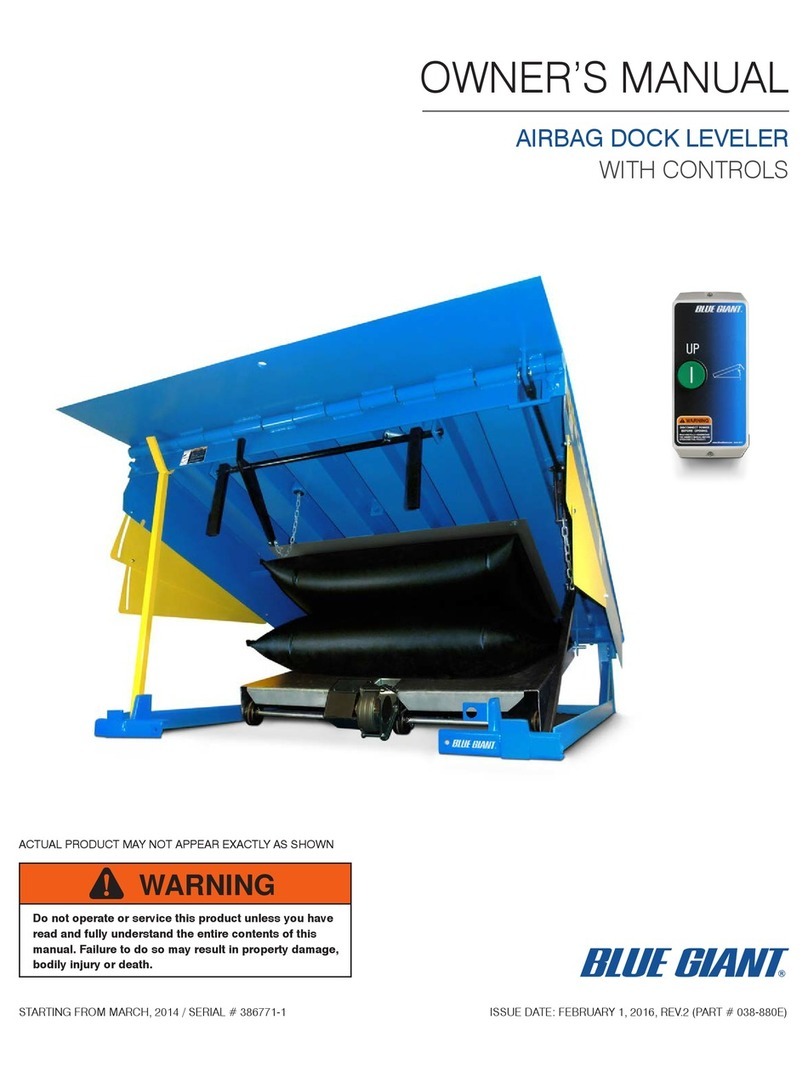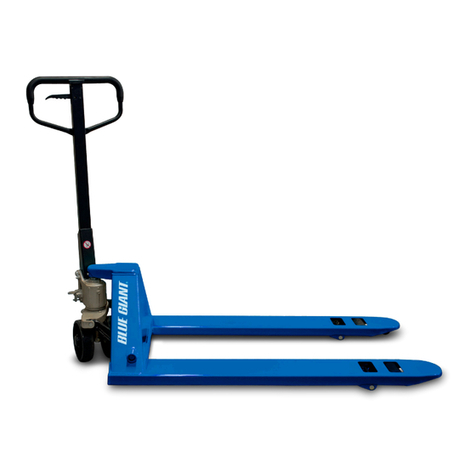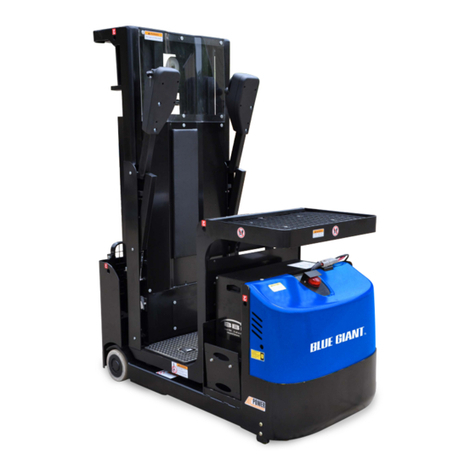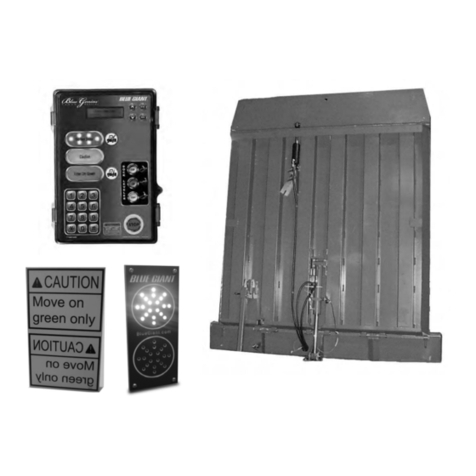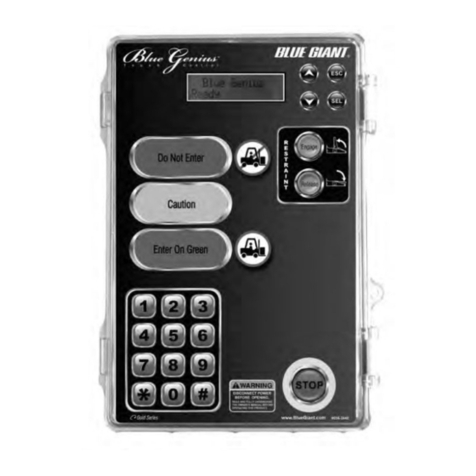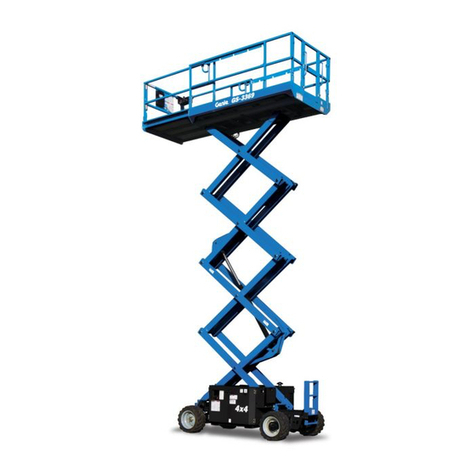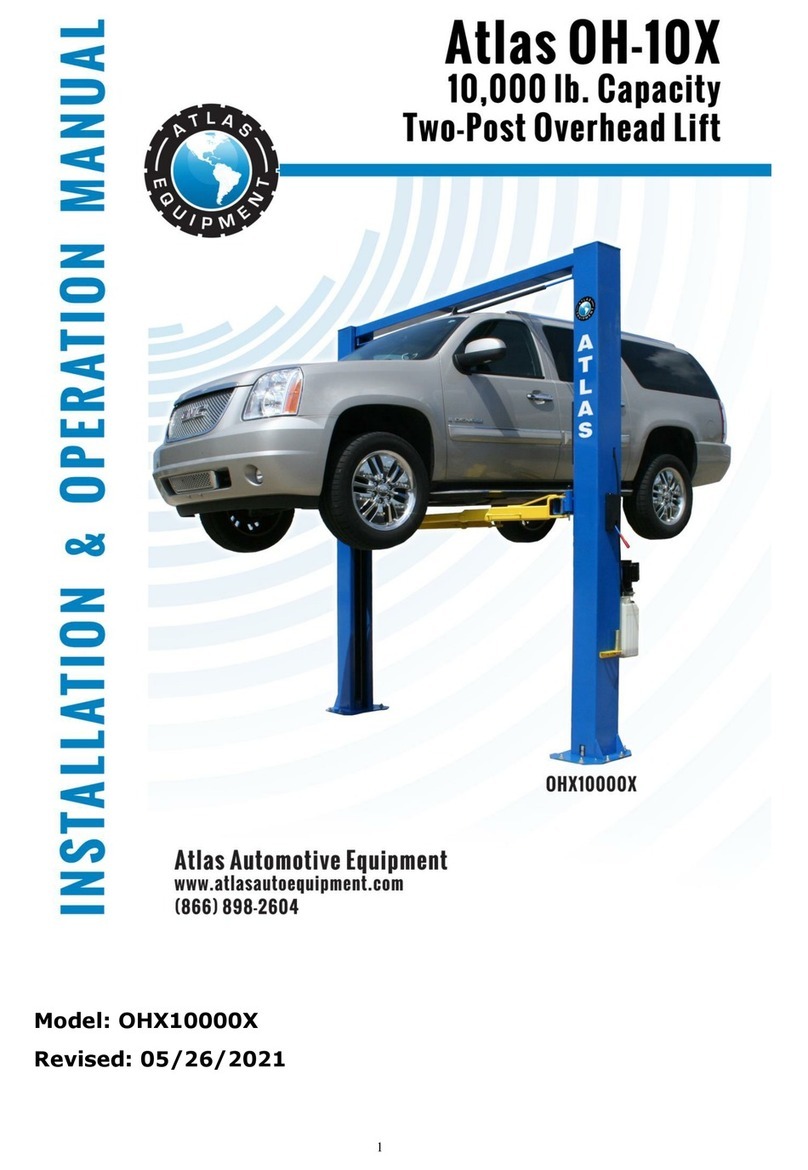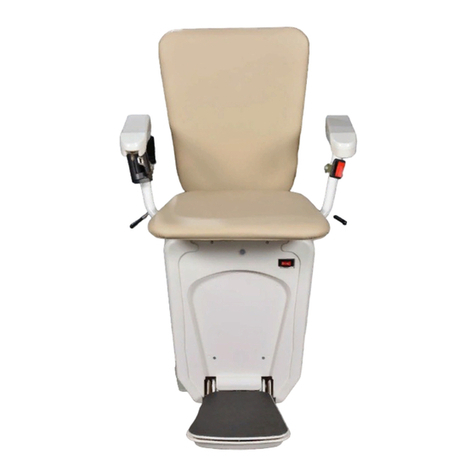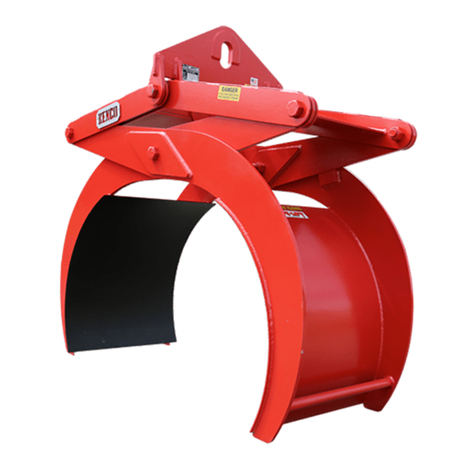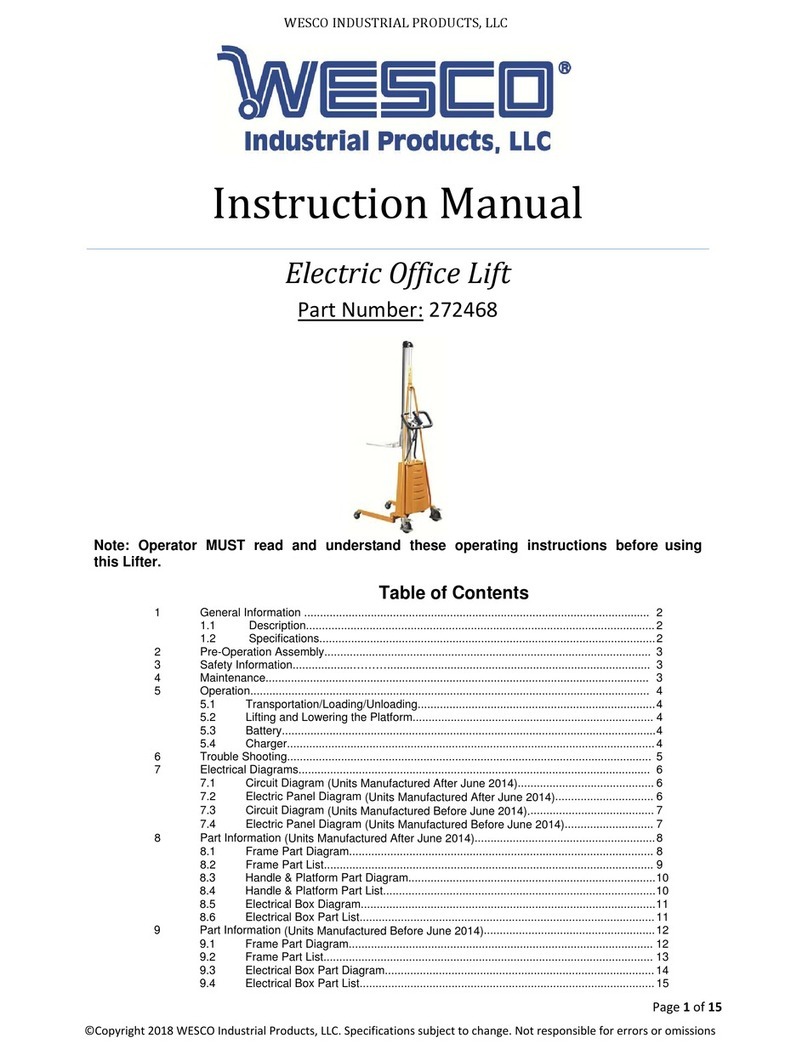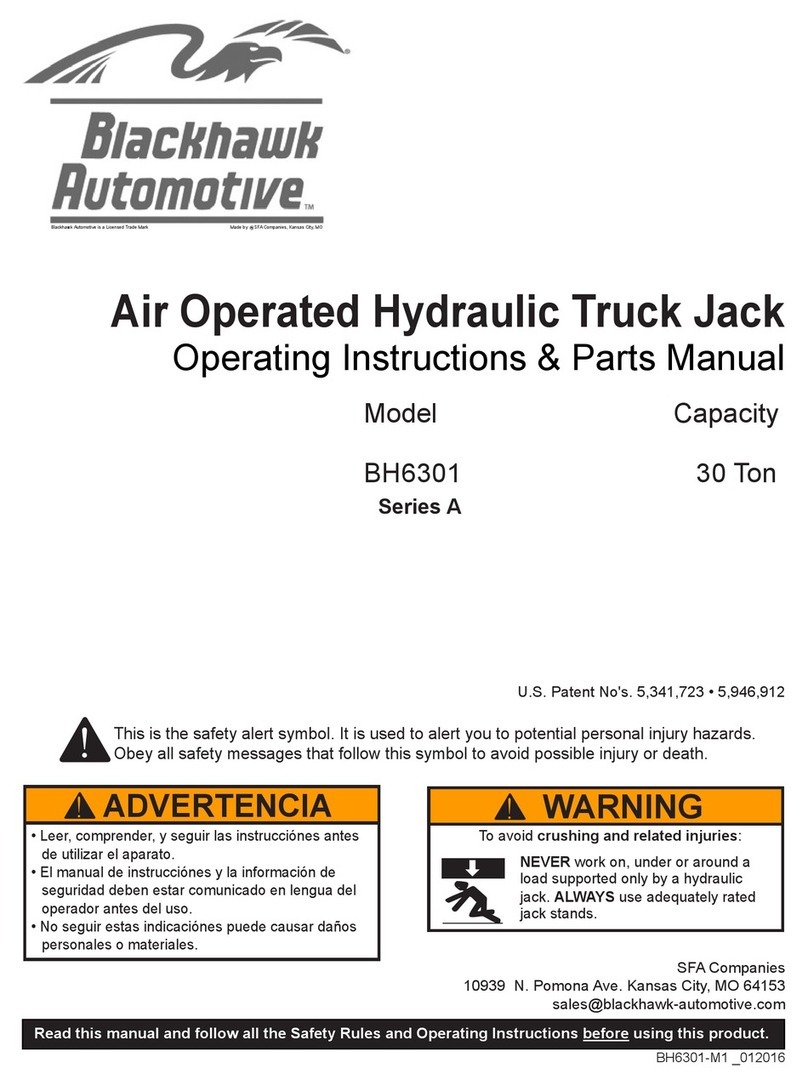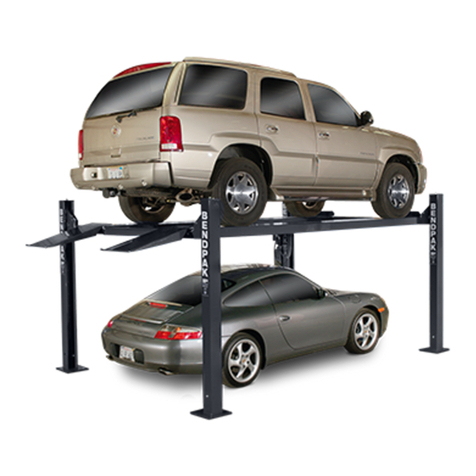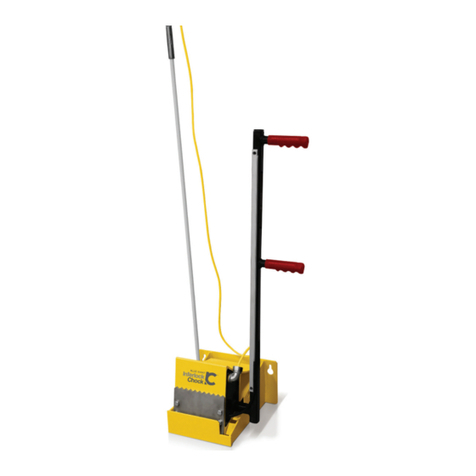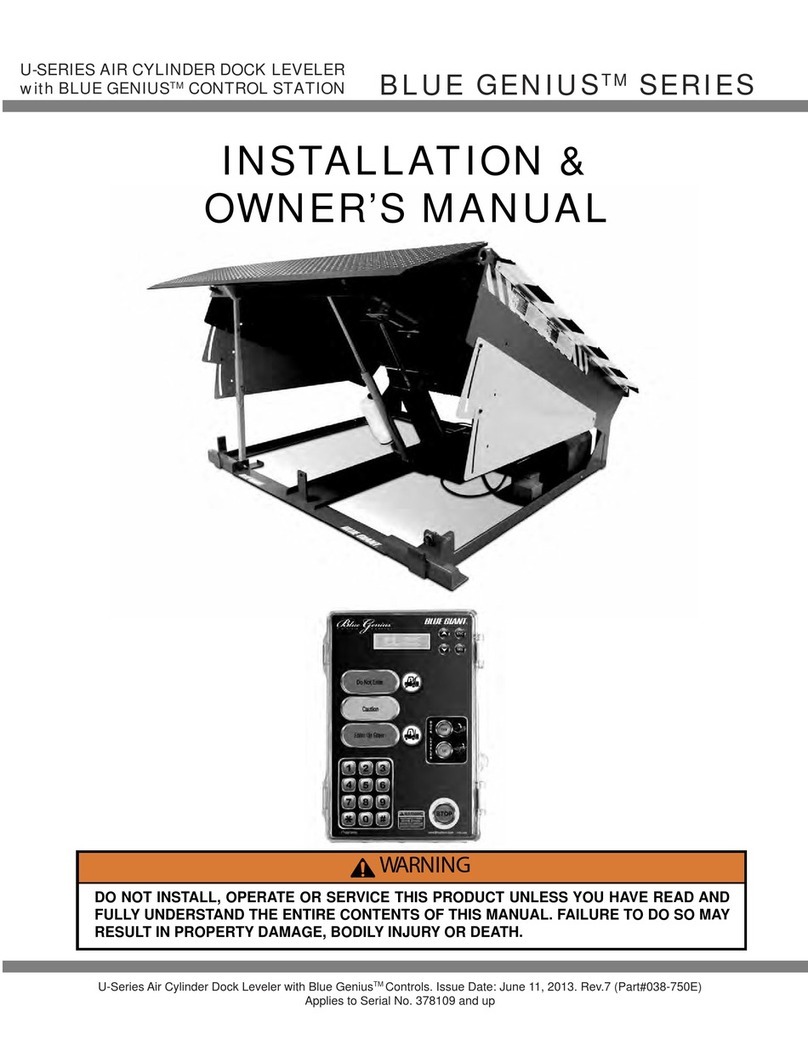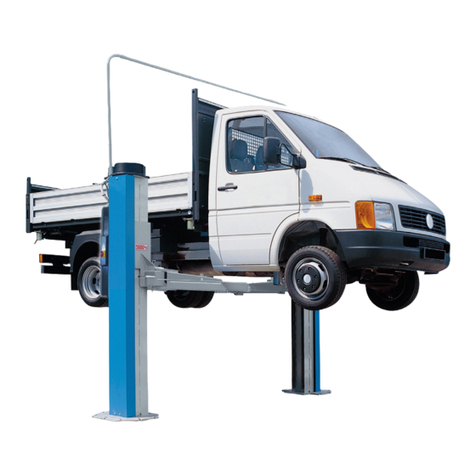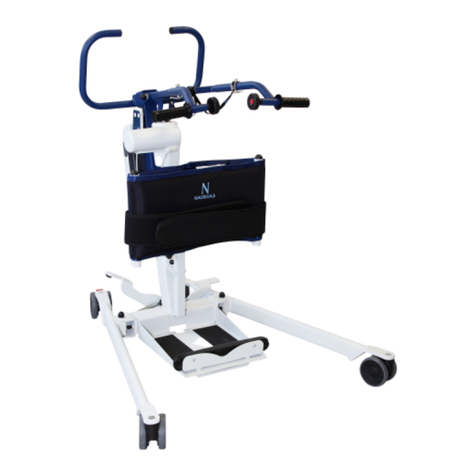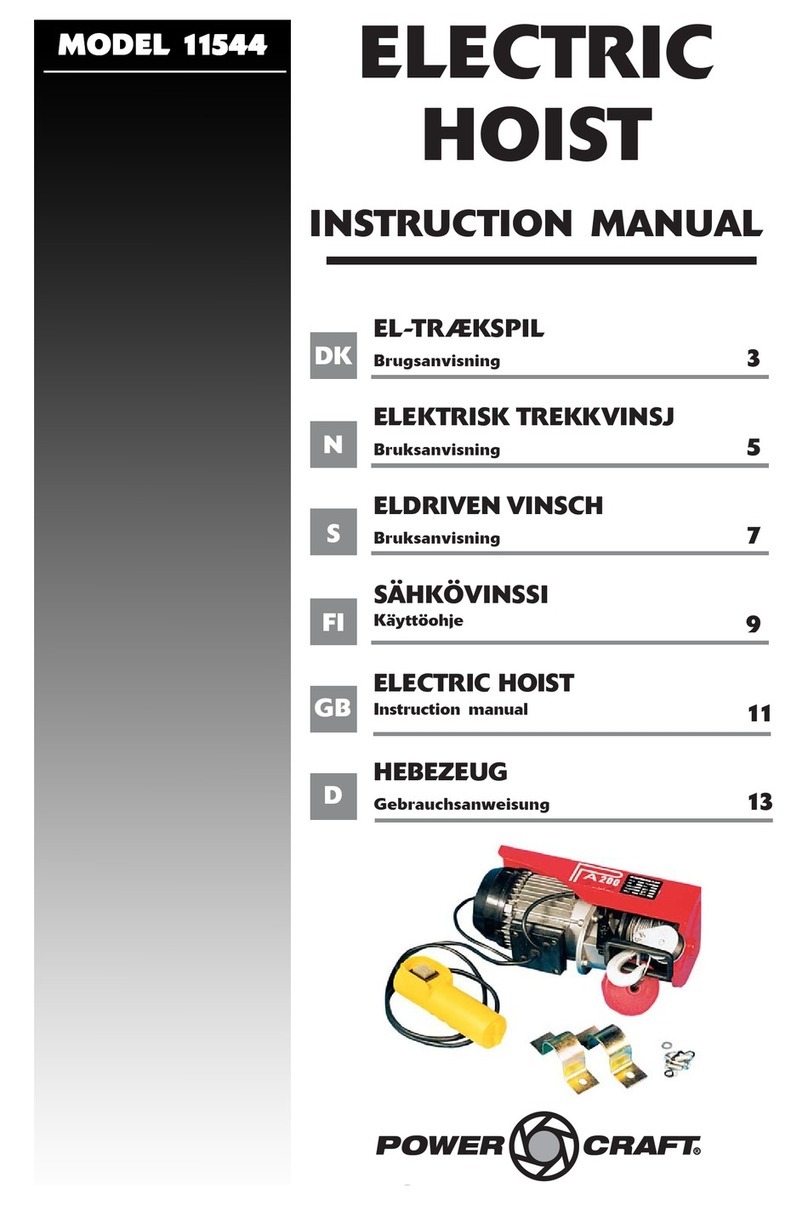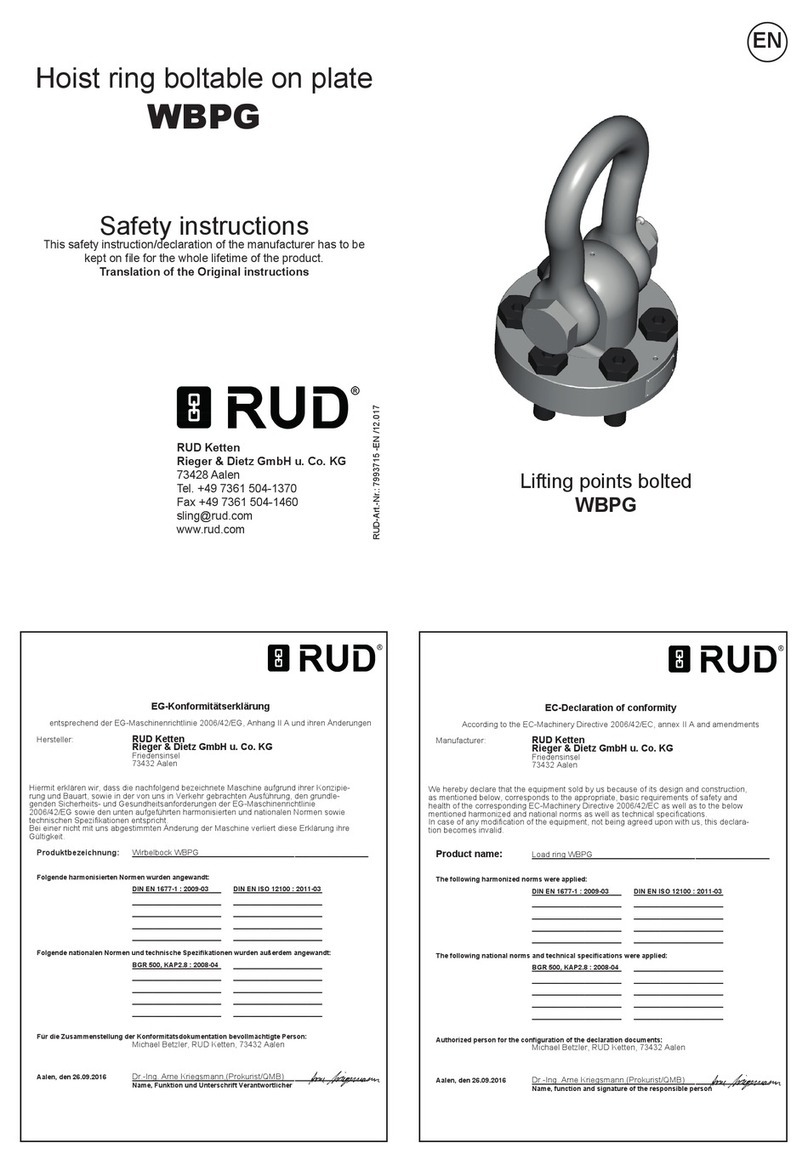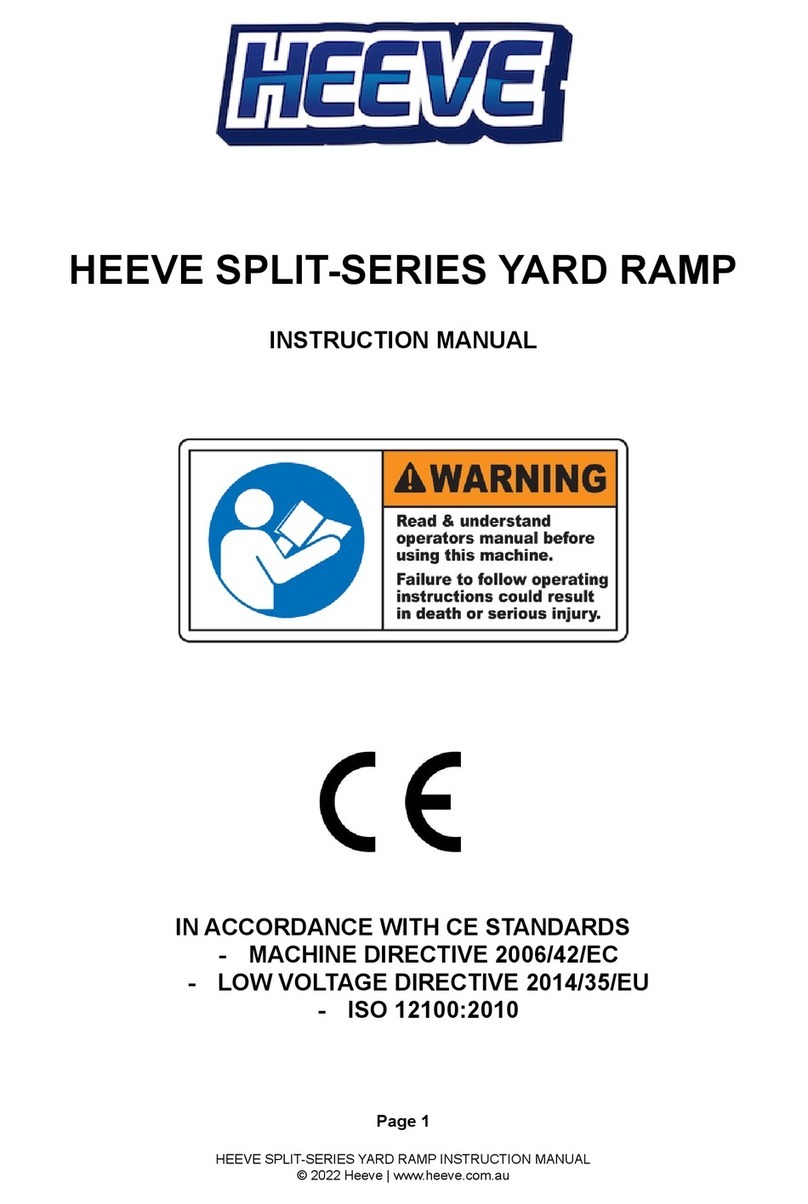
TABLE OF CONTENTS
Section Page Section Page
1 DESCRIPTION............................................................1-1
1-1. INTRODUCTION..............................................1-1
1-2. GENERAL DESCRIPTION...............................1-1
1-3. SAFETY FEATURES. ......................................1-2
2 OPERATION ...............................................................2-1
2-1. GENERAL. .......................................................2-1
2-2. OPERATING PRECAUTIONS. ........................2-1
2-3. BEFORE OPERATION.....................................2-1
2-4. TRAVEL. ..........................................................2-4
2-4.1. BRAKE.............................................................2-4
2-4.2. TRAVEL ...........................................................2-4
2-4.3. BELLY-BUTTON SWITCH...............................2-4
2-5. STEERING ARM GAS SPRING.......................2-5
2-6. LIFT AND LOWER CONTROLS. .....................2-5
2-7. LOADING AND UNLOADING. .........................2-5
2-8. PARKING. ........................................................2-5
3 PLANNED MAINTENANCE ........................................3-1
3-1. GENERAL. .......................................................3-1
3-2. MONTHLY AND QUARTERLY CHECKS........3-1
3-3. BATTERY CARE.............................................3-1
3-3.1. GENERAL ........................................................3-1
3-3.2. SAFETY RULES ..............................................3-2
3-3.3. BATTERY CARE AND CHARGING.................3-2
3-3.4. BATTERY CLEANING......................................3-2
3-3.5. MAINTENANCE FREE BATTERIES................3-3
3-4. CHARGING BATTERIES.................................3-3
3-5. LUBRICATION. ................................................3-4
4 TROUBLESHOOTING ................................................4-1
4-1. GENERAL ........................................................4-1
4-2. CONTROLLER TROUBLESHOOTING............4-4
4-2.1. ZAPI CAN CONSOLE KIT................................4-4
4-2.2. DIAGNOSTIC HISTORY..................................4-6
4-2.3. ADJUISTMENT. ...............................................4-6
5 STEERING ARM, CONTROL HEAD AND
COMPARTMENT ........................................................5-1
5-1. CONTROL HEAD.............................................5-1
5-1.1. COVER REMOVAL..........................................5-1
5-1.2. COVER INSTALLATION..................................5-2
5-1.3. CONTROL HEAD REMOVAL ..........................5-3
5-1.4. CONTROL HEAD INSTALLATION ..................5-3
5-1.5. BELLY-BUTTON SWITCH REPLACEMENT...5-3
5-1.6. HORN, LIFT AND LOWER SWITCH
REPLACEMENT...............................................5-3
5-1.7. SPEED POTENTIOMETER REPLACEMENT. 5-3
5-2. STEERING ARM..............................................5-3
5-2.1. RETURN SPRING REPLACEMENT................5-3
5-2.2. STEERING ARM REMOVAL............................5-4
5-2.3. STEERING ARM INSTALLATION....................5-4
5-3. COMPARTMENT COVERS.............................5-4
5-3.1. REMOVAL........................................................5-4
5-3.2. INSTALLATION................................................5-4
6 BRAKE SERVICING................................................... 6-1
6-1. BRAKE............................................................. 6-1
6-1.1. AIR GAP ADJUSTMENT................................. 6-1
6-1.2. STOPPING DISTANCE ADJUSTMENT.......... 6-2
6-1.3. BRAKE ASSEMBLY REPLACEMENT ............ 6-2
7 TRANSMISSION, DRIVE WHEEL, LOAD WHEEL.... 7-1
7-1. DRIVE WHEEL................................................ 7-1
7-2. TRANSMISSION. ............................................ 7-1
7-3. LOAD WHEEL. ................................................ 7-3
7-3.1. REMOVAL ....................................................... 7-3
7-3.2. REPAIR ........................................................... 7-3
7-3.3. LOAD WHEEL INSTALLATION....................... 7-3
7-4. CASTERS........................................................ 7-3
8 ELEVATION SYSTEM SERVICING........................... 8-1
8-1. LIFT LINKAGE................................................. 8-1
8-1.1. REMOVAL ....................................................... 8-1
8-1.2. REPAIR ........................................................... 8-1
8-1.3. INSTALLATION ............................................... 8-1
9 HYDRAULIC SYSTEM SERVICING........................... 9-1
9-1. LINES AND FITTINGS .................................... 9-1
9-2. HYDRAULIC PUMP, MOTOR, AND
RESERVOIR ASSY......................................... 9-1
9-2.1. REMOVAL ....................................................... 9-1
9-2.2. DISASSEMBLY AND REASSEMBLY ............. 9-3
9-2.3. INSTALLATION ............................................... 9-3
9-2.4. LIFT CYLINDER .............................................. 9-3
10 ELECTRICAL COMPONENTS................................. 10-1
10-1. ELECTRICAL CONTROL PANEL ................. 10-1
10-1.1.MAINTENANCE............................................. 10-1
10-1.2.CLEANING .................................................... 10-1
10-1.3.PANEL REMOVAL. ....................................... 10-1
10-1.4.PANEL DISASSEMBLY................................. 10-1
10-1.5.PANEL INSTALLATION. ............................... 10-1
10-2. HORN REPLACEMENT ................................ 10-4
10-3. PUMP MOTOR.............................................. 10-5
10-4. DRIVE MOTOR. ............................................ 10-5
10-4.1.MOTOR REMOVAL....................................... 10-5
10-4.2.MOTOR INSTALLATION............................... 10-5
10-5. LIFT LIMIT SWITCH...................................... 10-5
10-5.1.REPLACEMENT............................................ 10-5
10-5.2.ADJUSTMENT............................................... 10-5
10-6. DEADMAN SWITCH...................................... 10-6
10-6.1.REPLACEMENT............................................ 10-6
11 OPTIONAL EQUIPMENT ......................................... 11-1
11-1. LOAD BACKREST......................................... 11-1
12 ILLUSTRATED PARTS BREAKDOWN.................... 12-1




















